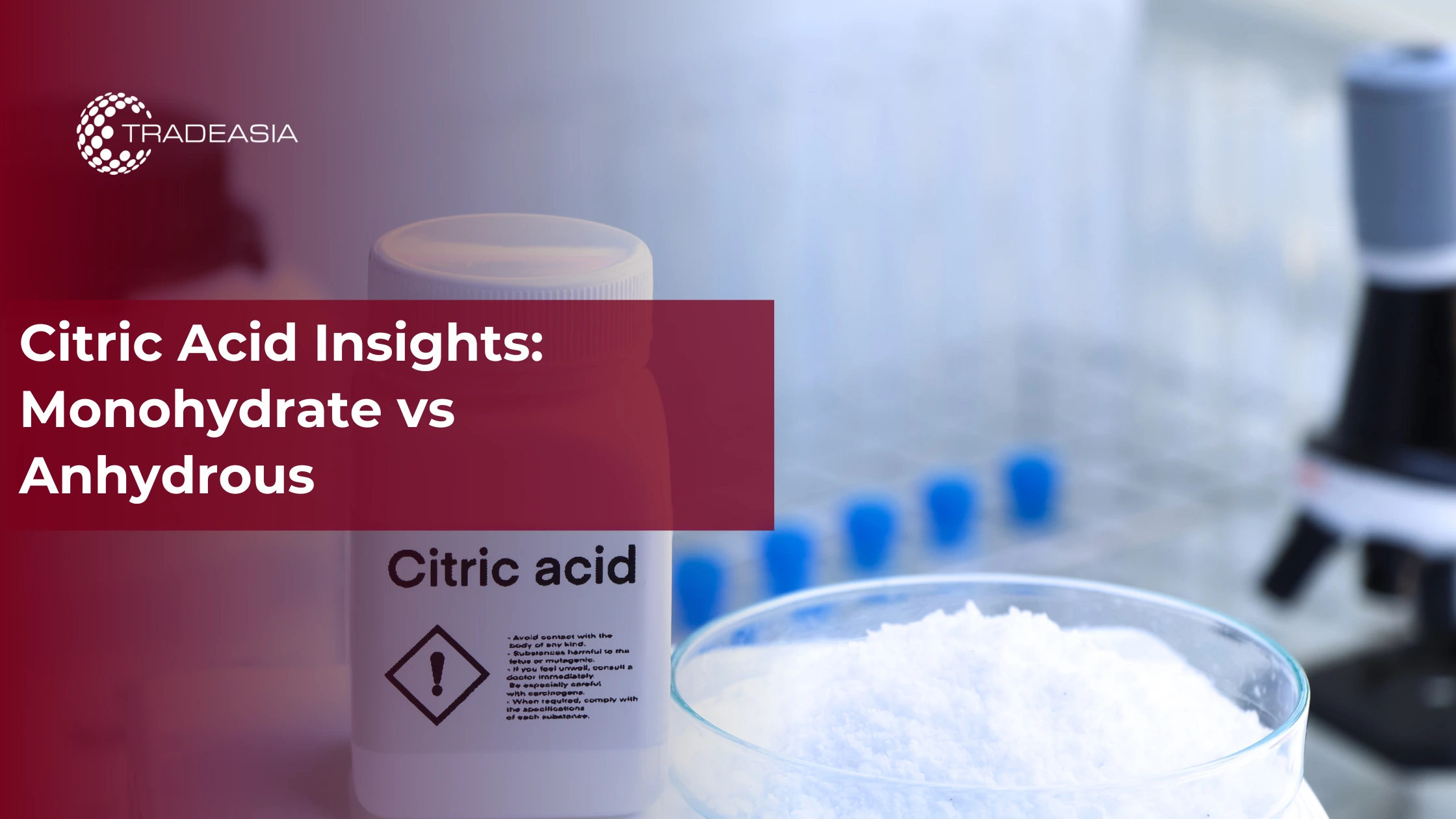Article
20 November 2025
Citric Acid Insights: Monohydrate vs Anhydrous
Food Ingredients

Table of Content
- Understanding the Two Forms
- Key Differences and Practical Considerations
- Storage and Shelf Life
Article
20 November 2025
Food Ingredients

Citric acid is a fundamental ingredient widely used across the food, pharmaceutical, and industrial sectors, prized for its natural acidic properties and versatility. Among the two primary types of citric acid available today—monohydrate and anhydrous—understanding their differences is key for traders and customers to select the right form for specific needs.
Both monohydrate and anhydrous citric acid share the same core chemical compound (C6H8O7), but they differ in their water content and physical characteristics. Citric acid monohydrate includes one molecule of water per molecule of citric acid, expressed chemically as C6H8O7·H2O. In contrast, anhydrous citric acid contains no water molecules, represented simply as C6H8O7.
This difference in water content influences their properties from solubility to handling:
Monohydrate citric acid often appears as translucent, larger crystals or a soft white powder due to the water within its crystal structure.
Anhydrous citric acid usually looks like a finer, white crystalline powder that is denser and more compact because it lacks this water.
Water Content and Stability
Monohydrate contains approximately 7.5% to 8.5% water by weight. This water of crystallization affects its melting point, which is around 100°C, as the water is released when heated. Meanwhile, the anhydrous form has a higher melting point near 153°C due to the absence of water, making it more stable at elevated temperatures and in dry environments.
Solubility and Handling
Both forms dissolve readily in water, but anhydrous citric acid tends to dissolve faster and achieves a more concentrated solution, which can be important in processes requiring rapid dissolution or precise dosing. Monohydrate's slightly hygroscopic nature sometimes leads to caking, whereas anhydrous citric acid generally flows more freely and resists moisture absorption, making it preferred where consistent powder handling is critical.
Applications and Use Cases
Citric acid monohydrate is commonly favored in liquid formulations such as beverages, syrups, and wet processing environments where its water content is compatible with the product matrix.
Anhydrous citric acid is ideal for dry mixes, tablets, and moisture-sensitive processes requiring longer shelf life and stability. It is also preferred in formulations where minimizing water content is essential.
Monohydrate citric acid requires storage conditions that minimize moisture exposure but is generally more stable in humid environments due to its inherent water content. Anhydrous citric acid, when kept dry, has a longer shelf life and better stability, making it suitable for bulk storage and applications in dry climates or environments.
In conclusion, choosing between monohydrate and anhydrous citric acid fundamentally boils down to application requirements related to moisture, solubility, and handling characteristics. Both types are approved for food and pharmaceutical use by regulatory authorities such as the FDA and EFSA, making them safe and reliable ingredients. Understanding these distinctions enables traders and buyers to make informed decisions based on product needs rather than assumptions, ensuring the right fit for every formulation.
Source:
We're committed to your privacy. Tradeasia uses the information you provide to us to contact you about our relevant content, products, and services. For more information, check out our privacy policy.
Leave a Comment